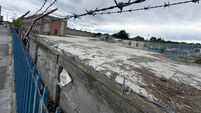Rise in opium cultivation sparks fears of heroin supply boom
UN reports show the cultivation of opium jumped by nearly 60% in Afghanistan this year, threatening a glut of cheap heroin worldwide.
Gardaí and customs have already noticed a sharp growth in heroin hauls, seizing more than 42kgs so far this year, compared to totals of 32kgs in 2005 and 27kgs in 2004.
Mr Ahern, Minister of State with responsibility for the National Drugs Strategy, said: “In spite of all the efforts of police authorities across Europe, there’s vast amounts coming across Asia from Afghanistan. The more that gets on the market in Turkey or where-ever, the more that arrives in western Europe and the more that arrives here.”
New estimates published by the United Nations Office on Drugs and Crime (UNODC) show opium cultivation grew by 59% in 2006. UNODC’s Annual Opium Survey for Afghanistan showed the area under opium cultivation reached a record 165,000 hectares in 2006 compared with 104,000 in 2005.
The report said that in the southern province of Helmand, largely controlled by the Taliban insurgents, cultivation soared by 162% to 69,000 acres.
The Islamic extremists, who were ousted by US-led forces in 2001, have scaled up their attacks on the Afghan government and international forces and have used the drugs trade to fund their efforts.
“These are very alarming numbers. Afghanistan is increasingly hooked on its own drug,” UNODC executive director Antonio Maria Costa.
“This year’s harvest will be around 6,100 tons of opium — a staggering 92% of total world supply. It exceeds global consumption by 30%.”
The UNODC chief warned the Afghan opium boom was likely to fuel a surge in the number of lethal drug overdoses when the new heroin starts reaching users in 2007. He said past experience showed such booms result in the supply of higher purity heroin.
Mr Ahern said the situation highlighted the problem facing the gardaí and customs.
Mairéad Lyons, of the National Advisory Committee on Drugs, said Ireland needed to have the infrastructure in place, including prevention and treatment facilities, to act “as a buffer” for people in drug treatment so that they would not be affected by changes in supply.













